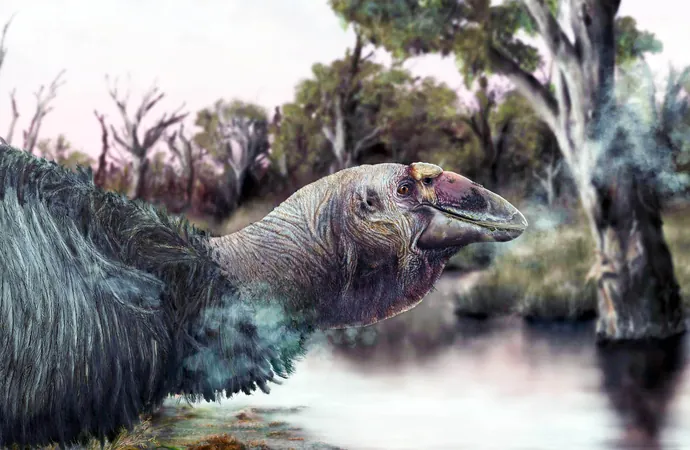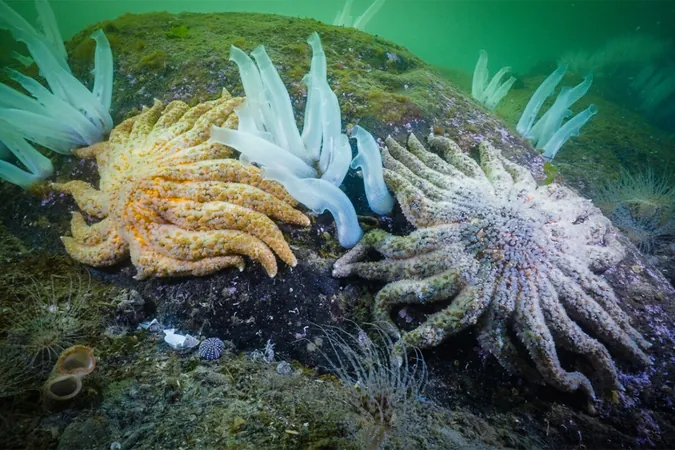
Unraveling the Mystery of the Thunder Bird: Discovery of a Rare Skull Shakes Up Our Understanding
2025-05-28
Author: William
Unearthly Giants of the Australian Outback
Once upon a time in the Australian outback, colossal birds towered over the landscape, some standing taller than humans and weighing five times as much as a cassowary. These enigmatic giants, known as dromornithids, had long been a puzzle for scientists, with only fragmented and often damaged bones to guide their imaginations.
A Game-Changing Discovery
A new discovery has dramatically shifted the understanding of these ancient avians. Skull bones unearthed from the dry bed of Lake Callabonna provide fresh insights into the evolution and ecology of Genyornis newtoni, the last of the dromornithids. This find not only sheds light on the bird's various adaptations but also hints at the reasons behind its extinction around 45,000 years ago.
The Secrets of Lake Callabonna
Lake Callabonna, once a shallow oasis, turned into a trap for unsuspecting wildlife during times of drought. As the waters receded, the muddy flats ensnared numerous creatures, preserving their remains remarkably well in salt-rich sediments comparable to the famed La Brea Tar Pits. While it took years for scientists to recover a specimen suitable for study, 2019 proved to be a pivotal year.
Revealing a Giant Goose-like Figure
With the recovery of a nearly complete skull alongside limb bones, researchers have discovered that Genyornis newtoni was more akin to a giant, muscular goose than to any of its previously assumed relatives like emus or ostriches. Flinders University researcher Phoebe McInerney explains that the bird boasted a parrot-like jaw, enabling it to crush tough vegetation with ease.
A Powerful Bite and an Aquatic Diet
The unique structure of the skull, featuring a parrot-like hinge, allowed for increased leverage while biting, suggesting that Genyornis had one of the strongest bites among birds—strong enough to tackle aquatic plants, fruits, and possibly even freshwater mussels. This powerful anatomy offered crucial advantages in the lush environments surrounding the ancient lake.
A Glimpse into a Lost Ecosystem
The shores of Lake Callabonna were once alive with reeds and seasonal pools bustling with wildlife. As ancient oases dwindled with climate shifts and habitat loss, Genyornis found itself increasingly isolated. Some remnants where stone tools were found hint that early humans also hunted these magnificent creatures.
Lessons from a Bygone Era
The story of Genyornis newtoni warns us of the precarious balance in ecosystems. Even mighty species that have thrived for millions of years can disappear in the face of rapid environmental change and habitat destruction. The newfound skull not only enriches our fossil record but also serves as a poignant reminder of how endangered species today must adapt to survive.
A Long-Awaited Revelation
This remarkable find closes a century-long gap in our understanding of these prehistoric giants. It reveals that the dromornithids were, in fact, titanic waterfowl with specialized feeding tools, shattering long-held misconceptions. From the bones interred in the earth, we learn timeless lessons of survival and extinction, continually reminding us of the ever-unfolding story of Earth's history.
The full study detailing this breakthrough is published in the journal Historical Biology.









 Brasil (PT)
Brasil (PT)
 Canada (EN)
Canada (EN)
 Chile (ES)
Chile (ES)
 Česko (CS)
Česko (CS)
 대한민국 (KO)
대한민국 (KO)
 España (ES)
España (ES)
 France (FR)
France (FR)
 Hong Kong (EN)
Hong Kong (EN)
 Italia (IT)
Italia (IT)
 日本 (JA)
日本 (JA)
 Magyarország (HU)
Magyarország (HU)
 Norge (NO)
Norge (NO)
 Polska (PL)
Polska (PL)
 Schweiz (DE)
Schweiz (DE)
 Singapore (EN)
Singapore (EN)
 Sverige (SV)
Sverige (SV)
 Suomi (FI)
Suomi (FI)
 Türkiye (TR)
Türkiye (TR)
 الإمارات العربية المتحدة (AR)
الإمارات العربية المتحدة (AR)